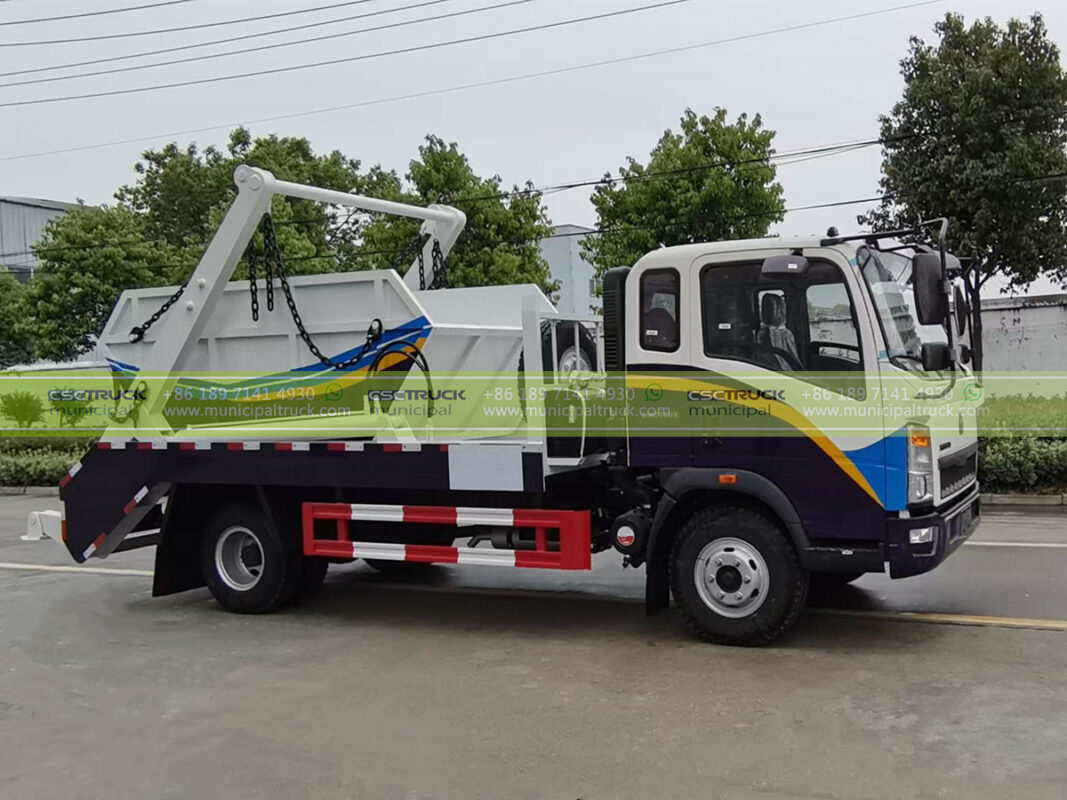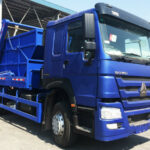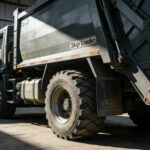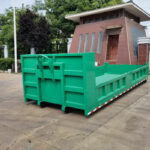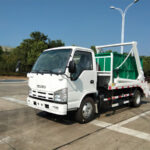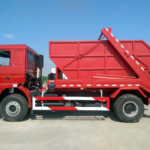Conquering the Chaos: Construction Waste’s Unique Demands
Construction sites generate a uniquely challenging waste stream – a relentless torrent of heavy, bulky, and often sharp debris including concrete rubble, scrap metal, discarded lumber, packaging, and general site refuse. This isn’t the uniform, bagged household garbage collected curbside; it’s irregular, heavy, and demands robust handling solutions. Traditional rear-loaders or even many side loader garbage truck models, while excellent for municipal routes, often struggle with the sheer volume, weight, and hazardous nature of construction detritus. Containers frequently overflow, access can be restricted, and manual loading poses significant safety risks. Efficiently managing this chaotic waste stream requires specialized equipment engineered for power, durability, and volumetric capacity – a challenge perfectly met by the skip loader garbage truck.
Anatomy of Efficiency: Core Strengths of the Skip Loader
The skip loader’s dominance on construction sites stems from a combination of powerful hardware and intelligent design centered around the intermodal container system:
- The Intermodal Container System: Versatility Embodied
At the heart of the skip loader’s efficiency is its use of large, standardized, demountable containers (often called skips, bins, or roll-off boxes). These containers, typically ranging from 10 to 40 cubic yards, are delivered empty and positioned strategically around the site. Workers fill them directly at the source of waste generation – beside the demolition crew, near the framing station, or adjacent to excavation work. This eliminates the need for constant manual hauling of debris to a centralized collection point or truck, drastically reducing labor time and worker fatigue. When full, the truck returns, hooks up, lifts, and hauls the entire container away for emptying, replacing it instantly with a clean, empty unit. The ability to place multiple containers simultaneously transforms waste logistics from a bottleneck into a seamless, continuous flow. - Hydraulic Muscle: Power Meets Precision
The defining feature of the skip loader is its robust, hydraulically powered hook arm system mounted behind the cab. This engineered marvel performs the critical task of container handling:- Effortless Hook-Up: The driver expertly maneuvers the hooks under the container’s front lifting pins, a process requiring skill but made efficient by well-designed sightlines and controls.
- Powerful Lifting & Transport: Massive hydraulic cylinders smoothly lift the heavily laden container completely off the ground, tilting it slightly onto the truck’s robust frame rails. This integrated hydraulic system possesses the exceptional strength needed to handle containers grossly overloaded with dense construction materials like concrete or soil, easily managing weights often exceeding 20 tons. The container is securely transported in this semi-tilted position directly to the disposal or recycling facility.
- Controlled Placement & Unloading: At the tipping site, the hydraulics precisely control the container’s elevation and angle for secure unloading. Back on the construction site, the system allows for millimeter-accurate placement of the empty container, even in tight or uneven spaces, ensuring it’s ready for immediate refilling. This cycle of drop-off, fill, and pick-up maximizes operational uptime and site productivity.
- Built for the Battlefield: Durability and Safety by Design
Construction sites are inherently harsh environments. Skip loaders are engineered accordingly:- Heavy-Duty Construction: From reinforced frames and high-strength steel used in the hook arms and subframes to heavy-duty axles, suspensions, and braking systems, every component is overbuilt to withstand the punishing loads, rough terrain, and constant vibrations encountered daily on active construction projects. Reliability is paramount.
- Enhanced Safety: The system significantly reduces manual handling risks. Workers load the bin directly at ground level, avoiding dangerous climbs onto truck bodies. The secure containment of debris within the robust steel container minimizes the risk of materials falling during transport or loading, protecting site personnel and the public. The driver operates the entire hook and lift process from the safety of the cab, shielded from shifting loads and the hazards of the active work zone.
Beyond the Basics: The Clear Advantage Over Alternatives
While other systems have their place, the skip loader’s integrated approach offers unmatched advantages for construction waste. Compared to a traditional hook loader garbage truck (often used for smaller containers or different applications), the dedicated skip loader chassis is optimized for maximum stability and payload capacity when transporting large construction bins over potentially rough access roads. Its design prioritizes the heavy lift and transport function above all else. Similarly, while essential for curbside collection, the side loader garbage truck lacks the volumetric capacity for bulk debris, struggles with heavy, non-bagged materials, and requires direct truck access along congested site perimeters – a luxury rarely available during active construction phases. The skip loader’s combination of off-site container servicing, immense volumetric capacity, and exceptional material handling strength makes it not just suitable, but fundamentally ideal for the relentless demands of the modern construction site, keeping projects clean, safe, and progressing on schedule.

